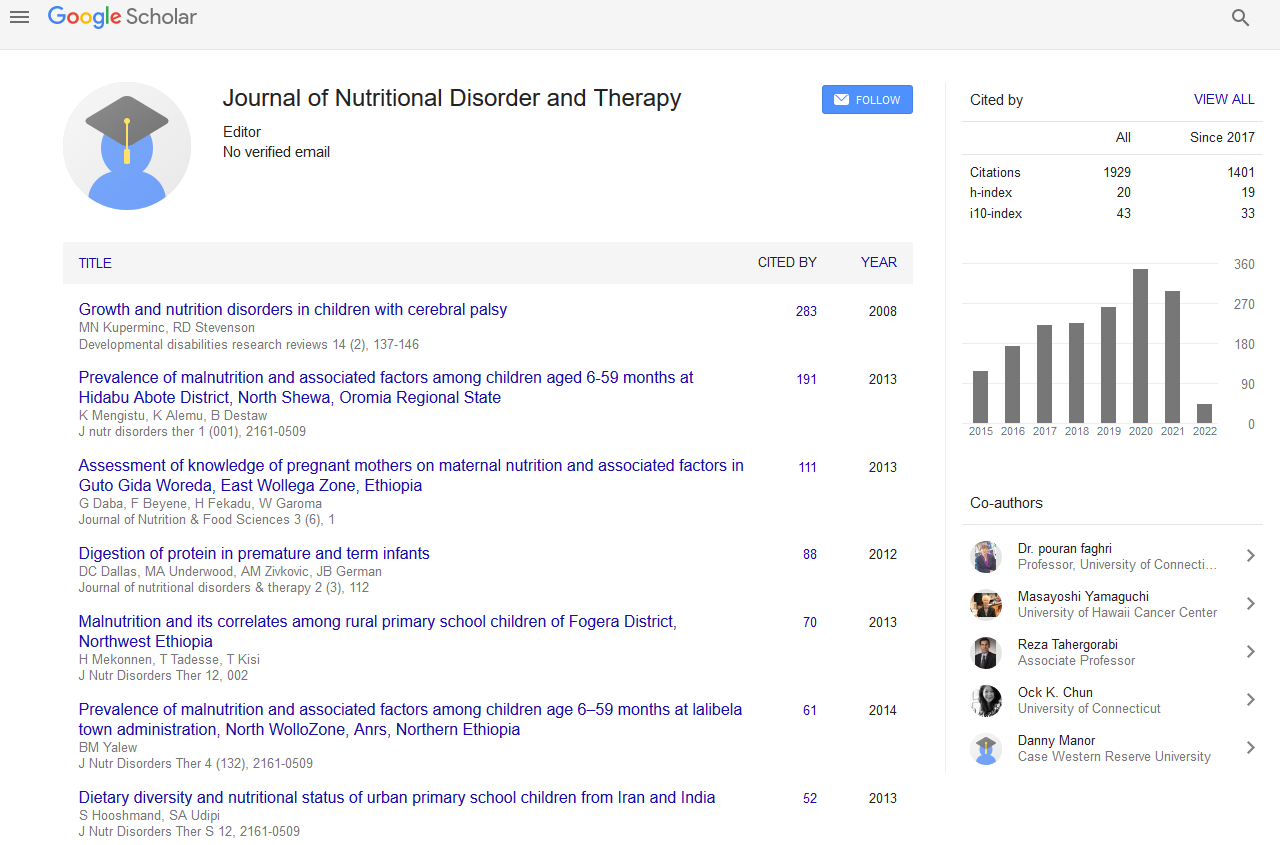Indexed In
- Open J Gate
- Genamics JournalSeek
- Academic Keys
- JournalTOCs
- Ulrich's Periodicals Directory
- RefSeek
- Hamdard University
- EBSCO A-Z
- OCLC- WorldCat
- Publons
- Geneva Foundation for Medical Education and Research
- Euro Pub
Useful Links
Share This Page
Journal Flyer

Open Access Journals
- Agri and Aquaculture
- Biochemistry
- Bioinformatics & Systems Biology
- Business & Management
- Chemistry
- Clinical Sciences
- Engineering
- Food & Nutrition
- General Science
- Genetics & Molecular Biology
- Immunology & Microbiology
- Medical Sciences
- Neuroscience & Psychology
- Nursing & Health Care
- Pharmaceutical Sciences
Artemssia scoparia inhibit adipogenesis through MAPK singaling in 3T3-L1 preadipocytes
15th International Conference on Clinical Nutrition
May 24-26, 2018 | Vienna, Austria
Jung Hwan Oh, Chang-Suk Kong, Fatih Karadeniz, Hyunwoo Park and Youngwan Seo
Silla University, South Korea
Korea Maritime University and Ocean University, South Korea
Posters & Accepted Abstracts: J Nutr Disorders Ther
Abstract:
Obesity is a leading cause to a variety of pathological diseases and has become a serious public health problem. The regulation of energy homoeostasis is a critical mechanism in obesity. Adipose tissue plays a vital role as the regulator of energy intake and expenditure. The halophyte Artemisia scoparia was investigated for its ability to counteract adipogenesis in 3T3-L1 preadipocytes using its crude extract and fractions (n-hexane, 85% aq. methanol, n-butanol and H2O). For adipocyte differentiation, the cells were treated with differentiation medium containing 10% fetal bovine serum, 0.5 mM 3-isobuty-1lmethylxanthine, 1 µM dexamethasone and 10 µg/ml insulin for six days. Their adipogenic activities were determined by lipid accumulation and adipogenic markers. Presence of curde extract and solvent fractions decreased the lipid content, stained with Oil Red O, in differentiating 3T3-L1, and also downregulated the crucial adipogenesis markers (PPARγ, C/EBPα, and SREBP1c) and transcription factors (p-p38, p-ERK, and p-JUK). In all fractions except the H2O, the decrease of adipogenic markers in mRNA expression and protein level was observed. Among them, a portion of the n-BuOH fraction was partitioned between EtOAc and H2O. A portion of the EtOAc was subjected to preparative TLC on silica (Si) gel with the solvent EtOAc/ MeOH/H2O to yield bioactive component against obesity.
Biography :
Jung Hwan Oh completed his PhD from Tokyo University of Marine Science and Technology. She has published more than 100 papers in reputed journals.
Email:wjdghks0171@naver.com


